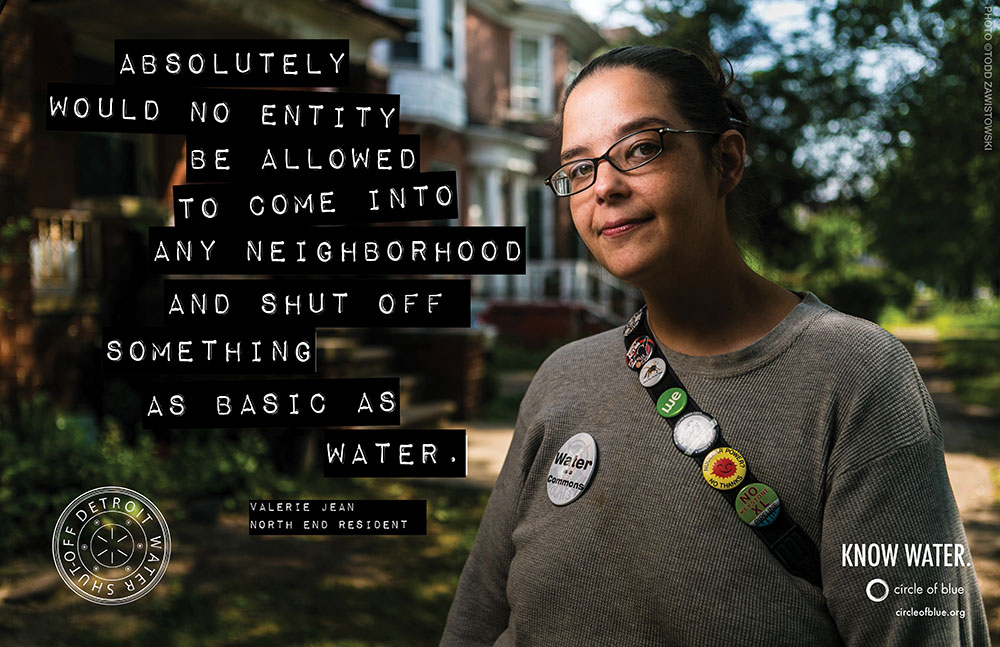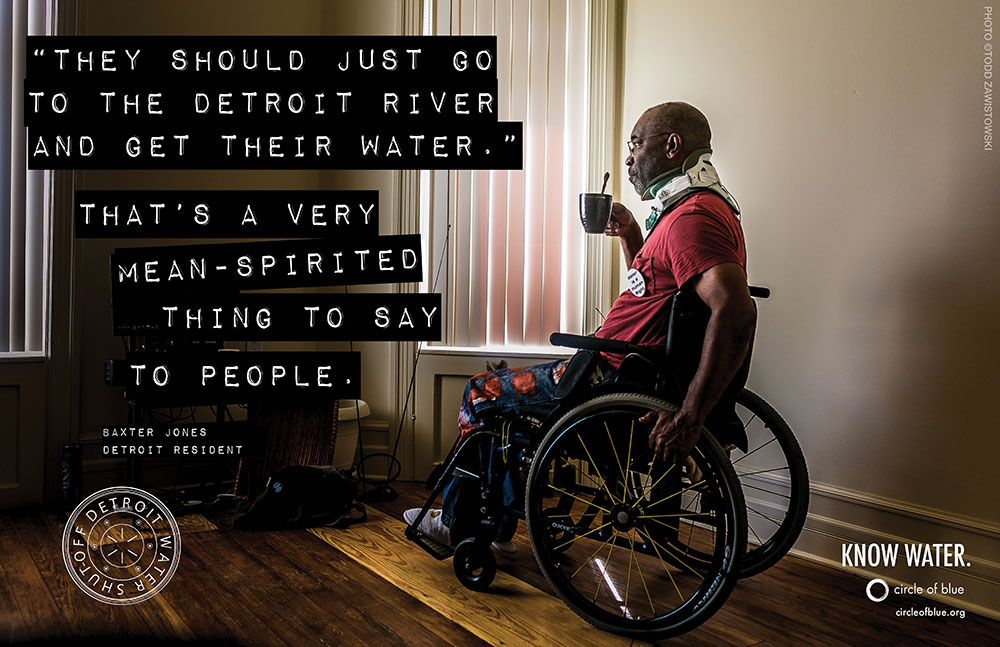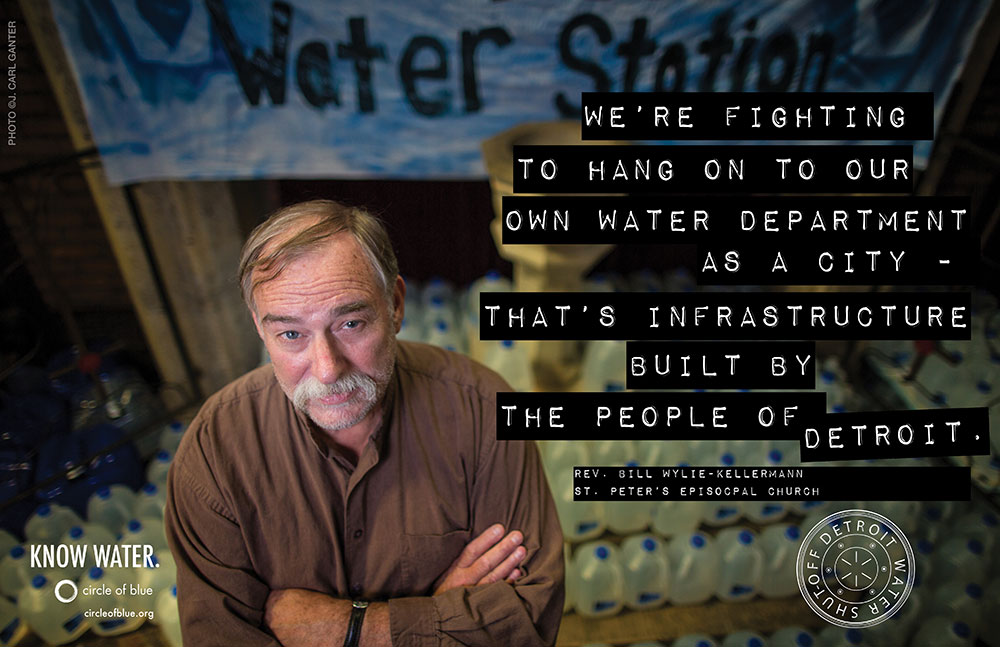
“Morning!” calls a man on a bike. He slows to wave as a black and white cat crosses a quiet tree-lined street in North End. In the space between the sidewalk and the road, each house has a small, flat steel circle – about six inches in diameter – that is half buried from years of encroaching lawn. It would be easy to miss these water-access points, which connect the city water mains to household plumbing, had they not recently been spray-painted bright blue. Nearly every point on the block has been painted, except for one, which has been repainted black to blend in. Valerie Jean, 39, a mother of five wearing jeans and tennies with a pen in her hair, says that she plans to plant a garden on top of her water-access point to provide even more camouflage. She doesn’t want Homrich, a private contracting company that was hired by the city, to find it easily again. On the day that Homrich came to shut off her neighborhood, Valerie stood on her water point and was passed by. Her guess is that the company gets paid for each residence that is shut off, so it was more profitable to keep going than to argue with her. This would also explain why the company first came through and painted the points, to make them easier to find. Valerie watched as the truck moved from residence to residence, shutting off water systematically in true Detroit assembly-line fashion. “Homrich, a private company, was given jurisdiction over our water,” Valerie says. “That tells you who’s in charge, right? The corporations are in charge; the emergency manager’s in charge. The government no longer actually works for the people.”
More Voices from Detroit
is a Traverse City-based assistant editor for Circle of Blue. She specializes in data visualization.
Interests: Latin America, Social Media, Science, Health, Indigenous Peoples










